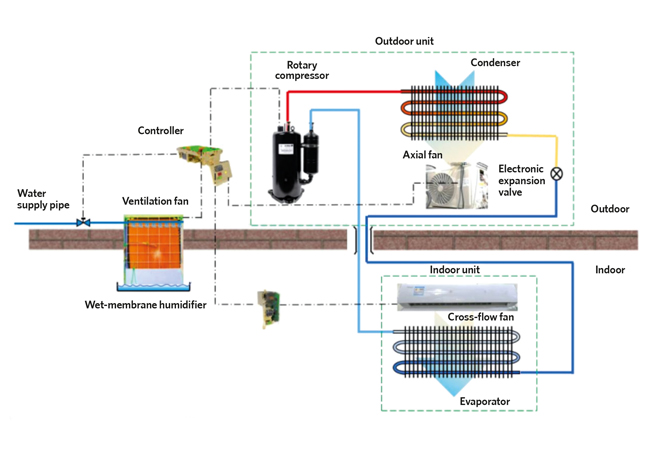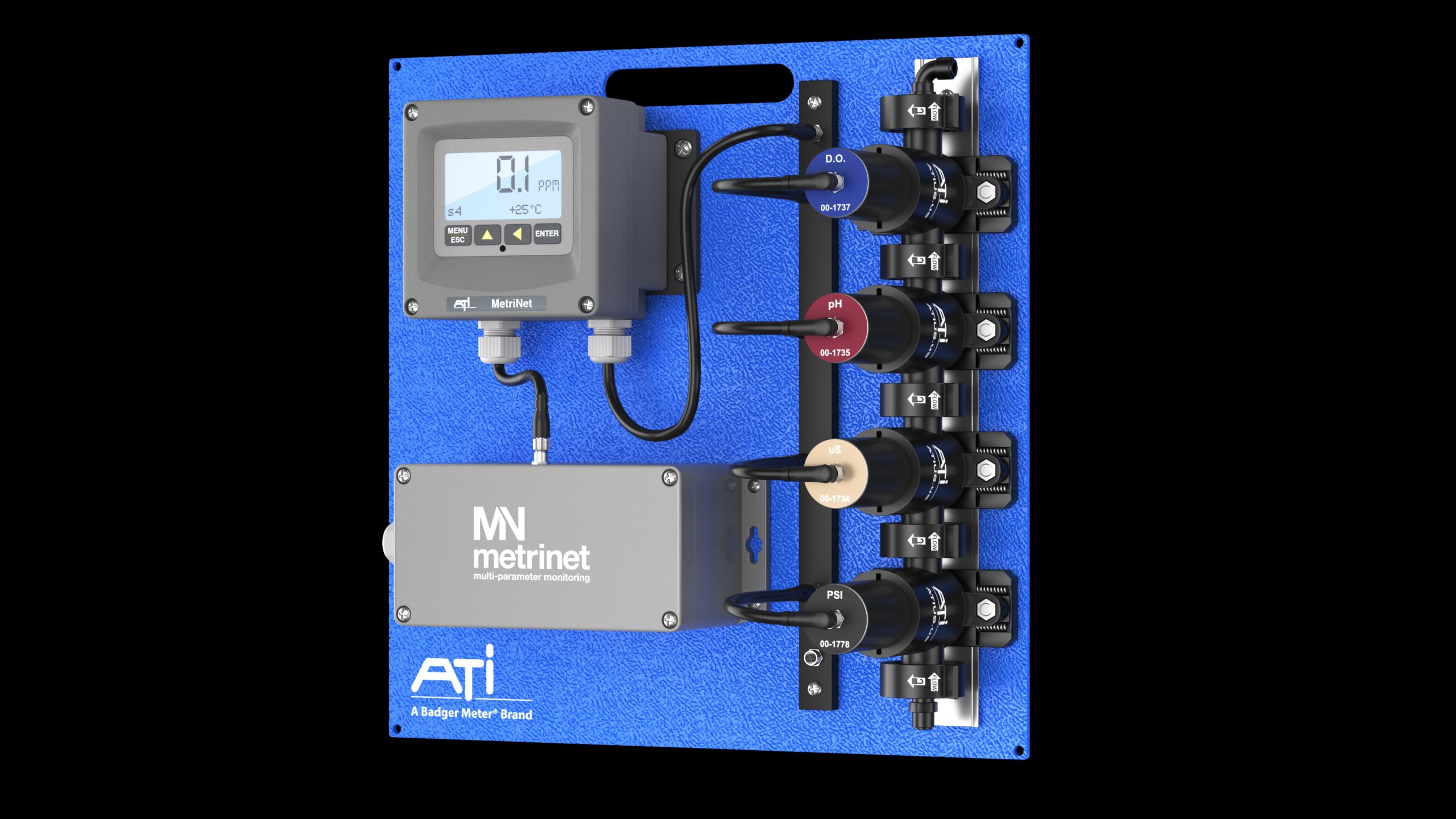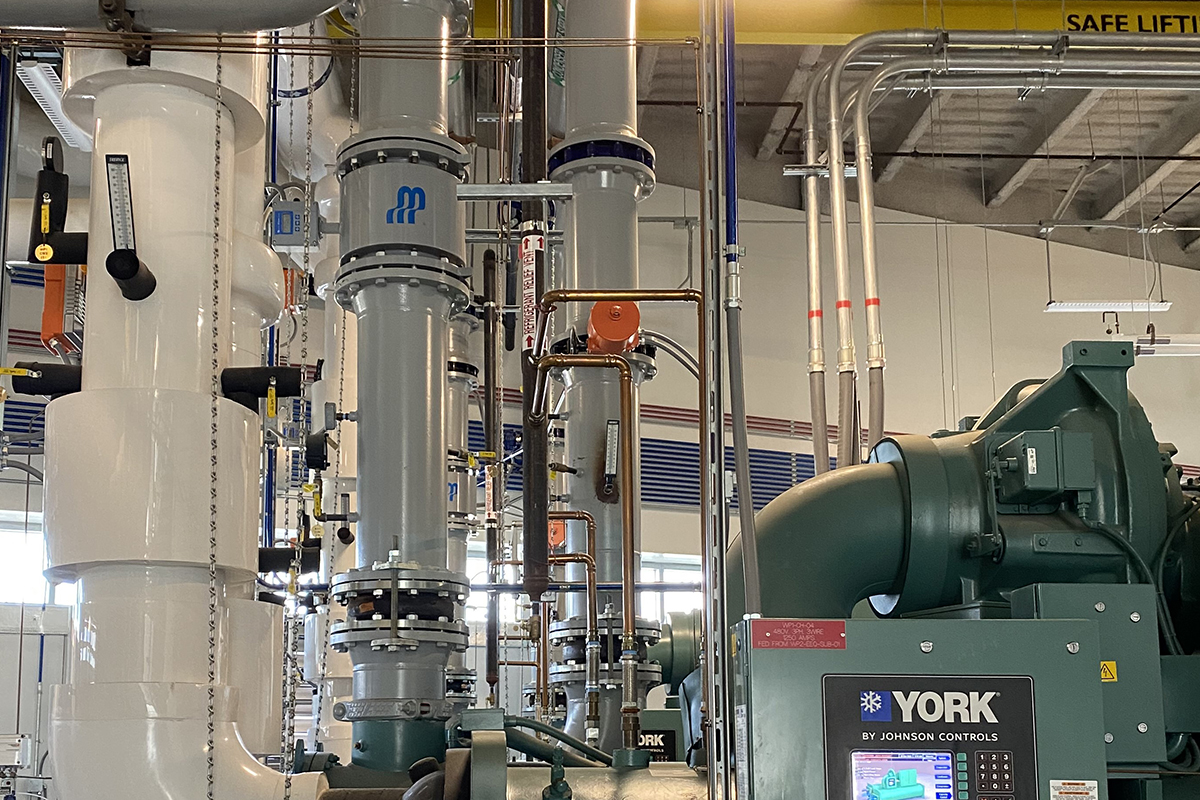
Schematic of a low-cost hybrid AC design, featuring in Annex 53 is a low-cost hybrid AC design based on a prototype that won the 2021 Global Cooling Prize (courtesy of Prof Baolong Wang)
Air conditioning (AC) and refrigeration systems account for a large share of current global energy consumption, and this demand is expected to increase sharply over the next 50 years unless actions are taken to ameliorate the increase.
In response, the International Energy Agency (IEA) initiated a project, Annex 53, to look at the development of high-efficiency and low-global warming potential (GWP) AC, refrigeration, and heat pump technologies. The final report for the project was published last month. Titled Advanced cooling/refrigeration technologies development, it was produced through the IEA Technology Collaboration Programme on Heat Pumping Technologies (HPT TCP).
The technical scope of Annex 53 was very broad by design. It is unlikely there will be only one, or even a few, so-called right solutions to the challenge. Therefore, the participants were free to investigate a wide range of possible technology solutions.
Research, development and demonstration (RD&D) efforts focused on advanced, higher-efficiency technology solutions for future AC and refrigeration systems.
The adoption of AC in developed countries increased rapidly in the 20th century, and the 21st century is expected to see increased adoption in developing countries – especially those with hotter climates and large, growing populations, such as India, China, Brazil, and Middle Eastern and African nations.
The IEA predicts that, by 2050, AC energy consumption levels will increase by 4.3 times the 2010 levels for non-Organisation for Economic Co-operation and Development (OECD) countries, as opposed to only 1.5 times for OECD countries1.
The demand for refrigeration is expected to increase at similar rates, driven primarily by food-preservation and storage needs; food demand is expected to increase 70% by 2050 relative to 20102. India, for example, has the largest refrigerated warehouse capacity of any country in the world, and this is expected to reach approximately 40.7Mmt(3) – almost a 35% increase since 20144. Global action – both short-term (for example, increasing deployment of current best technologies) and long-term (RD&D for advanced, higher-efficiency technology solutions) – is urgently needed.
Global research
An IEA Annex is a collaborative research project undertaken by the IEA to address specific challenges and opportunities in different energy-related fields. These projects bring together experts from various countries and organisations to conduct research, share knowledge, and develop solutions.
Participants are typically research institutions, universities, and companies from multiple IEA member countries. Each Annex has a well-defined theme or research area, such as building energy efficiency, renewable energy integration, or advanced cooling technologies.
Annexes typically last for three to five years and culminate in a final report, technical papers, and other resources freely accessible to the public.
The findings and technologies developed through Annexes contribute to the IEA’s overall mission of secure and sustainable energy supplies.
For more Annexes produced by the IEA Technology Collaboration Programme on Heat Pumping Technologies, visit heatpumpingtechnologies.org. Also see ‘Critical juncture’, CIBSE Journal, February 2023.
Annex 53 was initiated in October 2018 to help address the long-term RD&D need. Its main objective is to share information to encourage the development of high-efficiency and low-GWP AC, refrigeration, and heat pump technologies.
The annex was led by the United States, with participation by R&D institutes in the People’s Republic of China, Germany, Italy, and South Korea. Its report provides a summary of the current RD&D status of the leading technologies examined by each R&D institute.
Technologies of interest follow two distinct paths: those based on the time-proven vapour compression (VC) cycle, electrochemical compression, absorption and adsorption (including compressor-assisted) systems; and others based on non-traditional cycles – including magnetocaloric, elastocaloric, electrocaloric, and heat pipe-assisted caloric cycles – that are being increasingly investigated. Technology-readiness levels for the investigated technology options ranged from approximately two to about eight by the end of the annex.
VC systems could continue to be the system of choice, especially for the near future and, possibly, for the long term. To the extent, however, that VC-cycle systems continue to use refrigerants with non-zero GWPs – even in small amounts – they will remain vulnerable to further international refrigerant restrictions.
Non-traditional technologies – for example, caloric or other types – generally are not subject to this challenge because they do not rely on refrigerants in the traditional sense. However, all the non-traditional technologies discussed will require additional development before they can affect the market significantly.
- Annex 53 Advanced cooling/refrigeration technologies development was published in February 2024. The authors and cooperating agents are Reinhard Radermacher (Minta Martin professor of mechanical engineering at the University of Maryland) and Van D Baxter (Building Equipment Research Group, Oak Ridge National Laboratory, retired)
- The report is available at: heatpumpingtechnologies.org/annex53
References:
- Goetzler, W et al 2016. The future of air conditioning for buildings. DOE/EE-1394. Washington, DC: US Department of Energy Office of Energy Efficiency and Renewable Energy, bit.ly/CJFutACDoE
- University of Birmingham. 2015. Doing cold smarter. University of Birmingham Birmingham Energy Institute, bit.ly/3T8Zoty
- The Business Research Company. 2023. Cold chain global market report, bit.ly/3T37sfs
- Salin ,V. 2018. 2018 Global cold storage capacity report. International Institute of Refrigeration.





